26th August, 2025
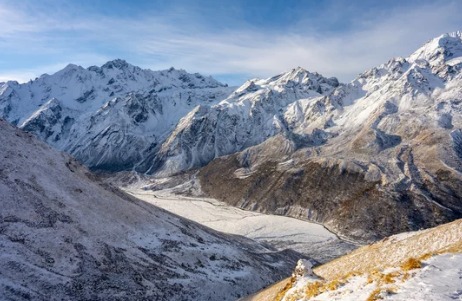
May 23, 2023
Langtang Valley Trek in November
- Langtang Valley Trek in November: Why November
- Langtang Valley Trek: Weather and Climate in November
- Langtang Trek: How Difficult
- Langtang Trek in November
- Langtang Valley Trek packing Lists
- Can I Do Solo Langtang Trek In November?
- Is it a Good Time to Trek to Langtang Valley in November?
- What is an Alternative Trail in Langtang Valley?
- Langtang Valley Trek Cost for November
- Transportation and Accommodation
- Food
- Permit
- Conclusion
- Langtang Region Packages
The Langtang Valley Trek in November is a mesmerizing adventure that offers trekkers a unique blend of natural beauty, cultural richness, and serene landscapes. Nestled in the heart of the Himalayas, Langtang Valley is often referred to as the "Valley of Glaciers" and is renowned for its stunning scenery and diverse flora and fauna.
November is an ideal time to embark on this trek due to the clear skies and moderate temperatures. The monsoon season has ended, leaving behind lush greenery and vibrant wildflowers that blanket the valley. The crisp, cool air and unobstructed views of snow-capped peaks, including Langtang Lirung, make for breathtaking panoramas that are perfect for photography enthusiasts.
The trek typically begins from Syabrubesi, a quaint village that serves as the gateway to the Langtang region. As you ascend through dense forests of rhododendron and bamboo, you may encounter various wildlife, such as the elusive red panda and Himalayan tahr. The trail also passes through traditional Tamang villages, where you can immerse yourself in the local culture and hospitality.
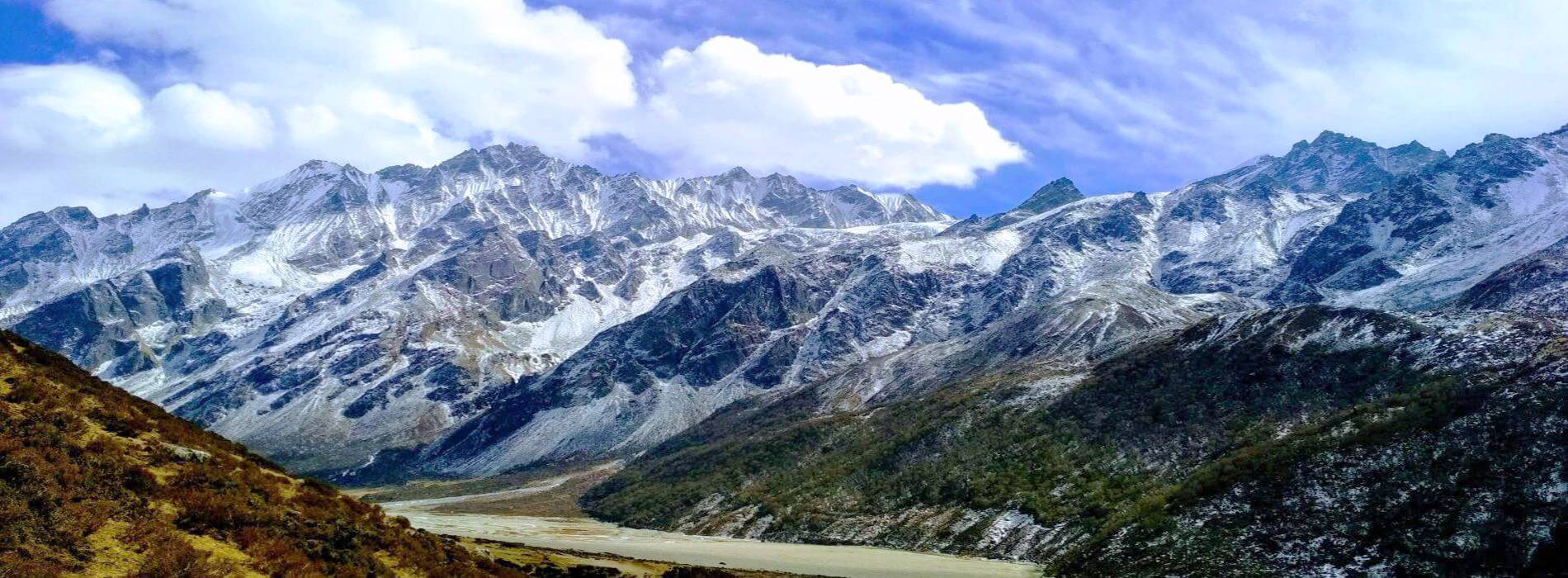
LANGTANG VALLEY TREK
A visit to Langtang National Park, Nepal’s first Himalayan national park- formed in 1976, is a wonderland of natural beauty and rich Tamang culture and only a hop-step and jump from Kathmandu!The Lang...
One of the highlights of the Langtang Valley Trek is reaching Kyanjin Gompa, a serene monastery surrounded by towering peaks. Here, trekkers can explore the ancient monastery, sample local yak cheese, and take short hikes to nearby viewpoints for even more spectacular vistas.
Overall, the Langtang Valley Trek in November offers a perfect blend of adventure, natural beauty, and cultural experiences, making it a must-do for any trekking enthusiast.
Langtang Valley Trek in November: Why November
The Langtang Valley Trek in November is a fantastic choice for several compelling reasons. November marks the end of the autumn season in Nepal, offering trekkers the best of both worlds: clear skies and moderate temperatures. The weather is generally stable, making it an ideal time for trekking. The monsoon rains have long subsided, leaving behind lush landscapes and vibrant flora. This month also provides some of the clearest views of the majestic Himalayan peaks, including Langtang Lirung, Ganesh Himal, and Dorje Lakpa.
Another advantage of trekking in November is the reduced crowd compared to the peak season of October. This allows for a more serene and personal experience with nature. The trails are less congested, and accommodations are more readily available, making your journey more comfortable. Additionally, November is a time when local festivals like Tihar and Chhath are celebrated, offering a unique cultural experience. Overall, the combination of favorable weather, stunning natural beauty, and cultural richness makes November an excellent time for the Langtang Valley Trek.
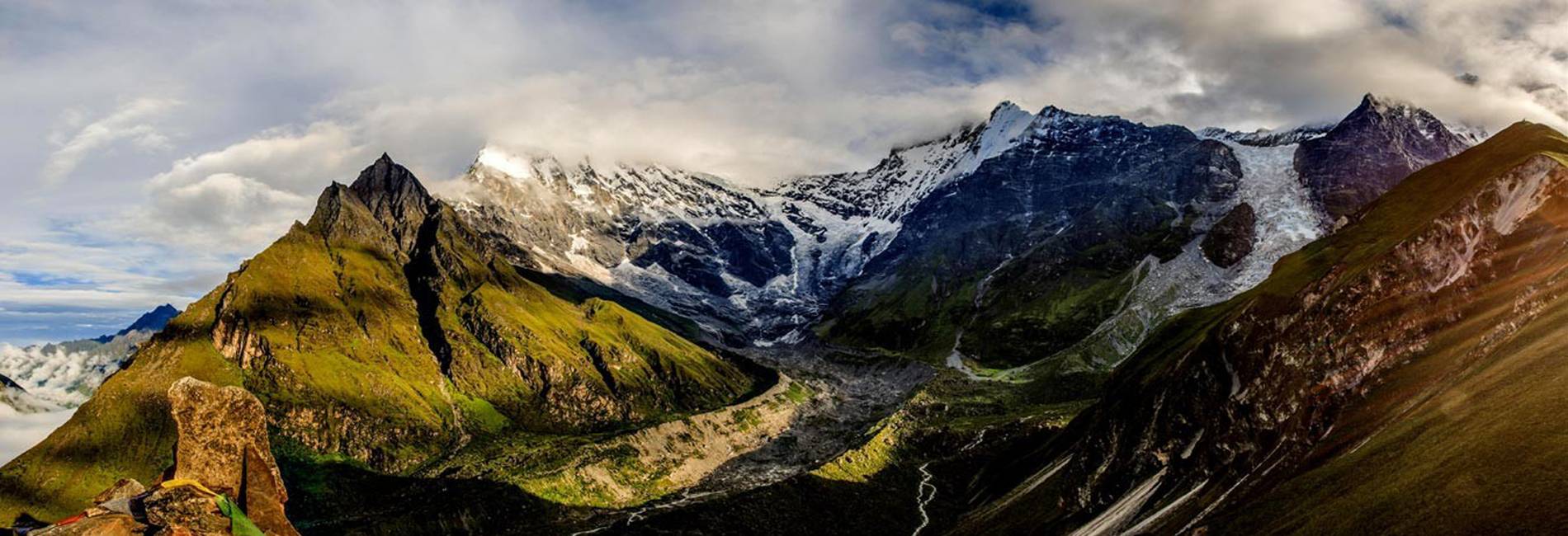
TAMANG HERITAGE TREK
LET THIS BE YOUR AWAKENING AND INTRODUCTION TO TIBETAN BUDDHISM.This is a spiritual journey into the heart of the Tibetan Buddhist region in the Langtang Valley on the Tibetan border. This maybe your...
Langtang Valley Trek: Weather and Climate in November
The weather and climate in November make it one of the best times to embark on the Langtang Valley Trek. During this month, the region experiences stable and clear weather conditions, which are perfect for trekking. Daytime temperatures typically range from 10°C to 15°C (50°F to 59°F), making it comfortable for walking. Nights can be colder, with temperatures dropping to around -5°C to 0°C (23°F to 32°F), so it's essential to pack warm clothing.
November is characterized by minimal rainfall, as the monsoon season has already ended. This results in dry and firm trails, reducing the risk of slippery paths and landslides. The skies are usually clear, offering unobstructed views of the stunning Himalayan peaks and the surrounding landscapes. The air is crisp and fresh, enhancing the overall trekking experience.
The lower humidity levels in November also mean fewer clouds and better visibility, which is crucial for capturing those breathtaking panoramic shots. Overall, the weather and climate in November provide an optimal environment for a safe, enjoyable, and visually rewarding Langtang Valley Trek.
Langtang Trek: How Difficult
The Langtang Trek is considered moderately difficult, making it accessible to a wide range of trekkers, including those with some prior trekking experience. The trek involves walking for 5-7 hours a day on average, covering diverse terrains that include steep ascents, descents, and flat trails. The highest point of the trek is Tserko Ri, which stands at an elevation of 4,984 meters (16,352 feet). While the altitude can pose a challenge, proper acclimatization and a steady pace can help mitigate the risks of altitude sickness.
Physical fitness is essential for this trek, as it requires endurance and stamina. However, you don't need to be an expert mountaineer to complete it. Basic preparation, such as regular cardio exercises and strength training, can go a long way in ensuring a successful trek. The trails are well-marked and maintained, and there are numerous teahouses along the way that provide food and accommodation, making the logistics relatively straightforward.
The support of experienced guides and porters can also ease the difficulty level, allowing you to focus more on enjoying the stunning landscapes and cultural experiences. Overall, while the Langtang Trek presents some challenges, it is manageable for most trekkers with adequate preparation and determination.
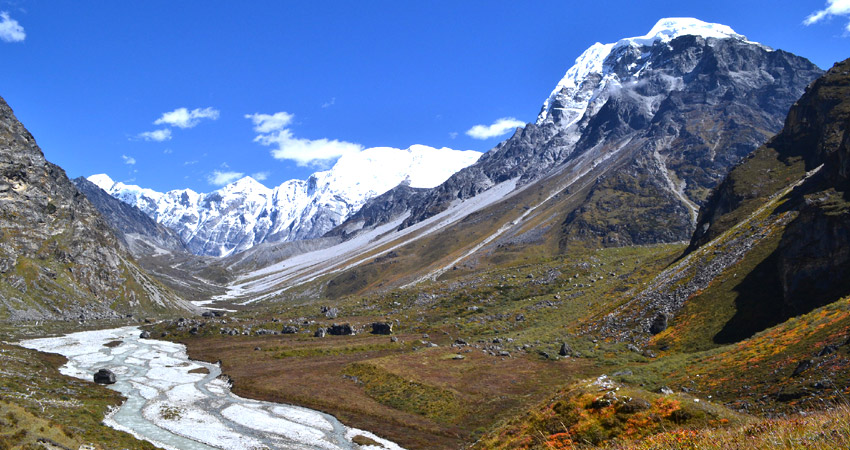
LANGTANG GOSAINKUNDA LAKE TREK
The Langtang Gosainkunda Lake (4380m) Trek takes you to alpine regions that will blow your mind! In a short trip from Kathmandu, you will find yourself in a pristine countryside in Nepal’s first...
Langtang Trek in November
Embarking on the Langtang Trek in November offers a unique blend of natural beauty, cultural richness, and favorable trekking conditions. As the autumn season draws to a close, the weather remains stable and clear, providing trekkers with some of the best views of the Himalayan range. The trails are adorned with vibrant autumn foliage, adding a splash of color to the already stunning landscapes.
One of the highlights of trekking in November is the opportunity to experience local festivals like Tihar and Chhath, which add a cultural dimension to your adventure. The trails are less crowded compared to the peak season of October, allowing for a more peaceful and intimate connection with nature. Accommodations are more readily available, and the teahouses are less busy, ensuring a comfortable stay.
The moderate temperatures during the day make for pleasant trekking conditions, while the colder nights are manageable with proper gear. The clear skies and low humidity levels enhance visibility, making it an ideal time for photography and panoramic views. Overall, the combination of favorable weather, cultural experiences, and stunning natural beauty makes November an excellent time for the Langtang Trek.
Langtang Valley Trek packing Lists
1. Clothing:
- Base Layers: Moisture-wicking thermal tops and bottoms.
- Insulating Layers: Fleece jacket or down jacket.
- Outer Layers: Waterproof and windproof jacket and pants.
- Trekking Pants: Comfortable and durable trekking pants.
- Trekking Shirts: Long-sleeve and short-sleeve moisture-wicking shirts.
- Warm Hat: Wool or fleece hat for cold weather.
- Gloves: Insulated and waterproof gloves.
- Buff or Scarf: For warmth and dust protection.
- Socks: Thermal and moisture-wicking trekking socks.
- Underwear: Comfortable and quick-drying.
2. Footwear:
- Trekking Boots: Sturdy, waterproof, and well-broken-in.
- Camp Shoes: Lightweight shoes or sandals for evenings.
3. Gear:
- Backpack: 40-50 liters with a rain cover.
- Sleeping Bag: Rated for -10°C to -15°C.
- Trekking Poles: Adjustable and lightweight.
- Headlamp: With extra batteries.
- Water Bottles/Bladder: At least 2 liters capacity.
- Water Purification: Tablets or a filter.
4. Personal Items:
- Sunscreen: High SPF.
- Lip Balm: With SPF.
- Sunglasses: UV protection.
- First Aid Kit: Including blister care, pain relievers, and any personal medications.
- Toiletries: Biodegradable soap, toothbrush, toothpaste, wet wipes, and hand sanitizer.
- Trekking Towel: Quick-drying.
5. Miscellaneous:
- Snacks: Energy bars, nuts, and dried fruits.
- Camera/Phone: With extra batteries or a power bank.
- Maps/Guidebook: For navigation.
- Cash: For tea houses and emergencies (ATMs are scarce).
6. Documents:
- Permits: TIMS card and Langtang National Park entry permit.
- Identification: Passport and copies.
- Travel Insurance: With coverage for high-altitude trekking.
Packing these essentials will help ensure a safe and enjoyable trek in the Langtang Valley during November. Happy trekking!
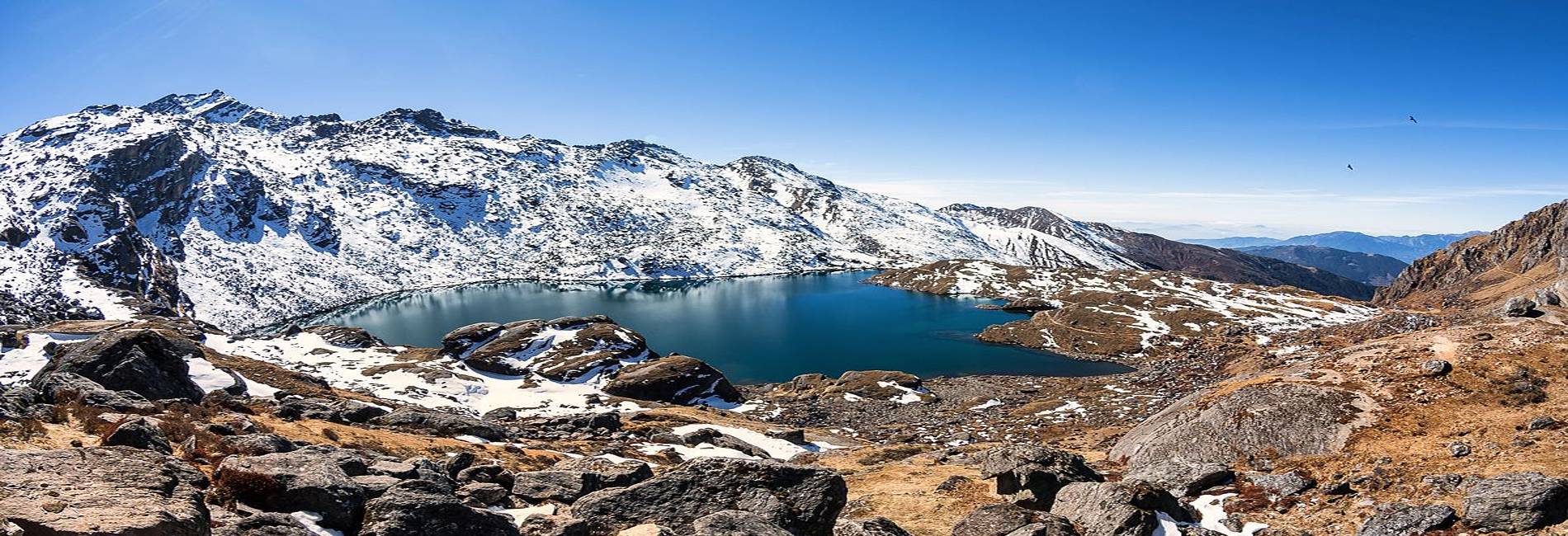
GOSAINKUNDA LAKE TREK
Bath in the pristine clear “holy” water of Gosainkunda Lake, a religious site and abode of Hindu deities Shiva and Gauri. This is a short trek in the much less crowded and quiet Langtang Region o...
Can I Do Solo Langtang Trek In November?
Yes, you can definitely do a solo Langtang Trek in November. This time of year is considered one of the best for trekking in the Langtang region due to the favorable weather conditions. The skies are generally clear, offering stunning views of the snow-capped peaks and the surrounding landscapes. The trails are well-marked and frequented by other trekkers, which adds a layer of safety for solo adventurers. However, it's important to be well-prepared. Make sure you have a detailed map, a reliable GPS device, and sufficient supplies. While the trails are popular, certain sections can be remote, so having basic first aid and emergency contact information is crucial. Additionally, consider informing someone about your trekking plans and expected return date. Solo trekking can be a deeply rewarding experience, offering a unique sense of freedom and connection with nature. Just ensure you take the necessary precautions to make your journey safe and enjoyable.
Is it a Good Time to Trek to Langtang Valley in November?
November is an excellent time to trek to Langtang Valley. The post-monsoon season brings clear skies and stable weather, making it ideal for trekking. The temperatures are moderate, with daytime temperatures ranging from 10°C to 15°C, which is comfortable for hiking. Nights can be colder, especially at higher altitudes, so it's essential to pack warm clothing. The trails are less crowded compared to the peak season in October, allowing for a more peaceful trekking experience. The autumn foliage adds a beautiful touch to the already stunning landscapes, with vibrant colors enhancing the scenic beauty of the region. Additionally, the local teahouses and lodges are fully operational, providing comfortable accommodation and meals. Overall, November offers a perfect blend of favorable weather, fewer crowds, and breathtaking scenery, making it one of the best times to trek to Langtang Valley.
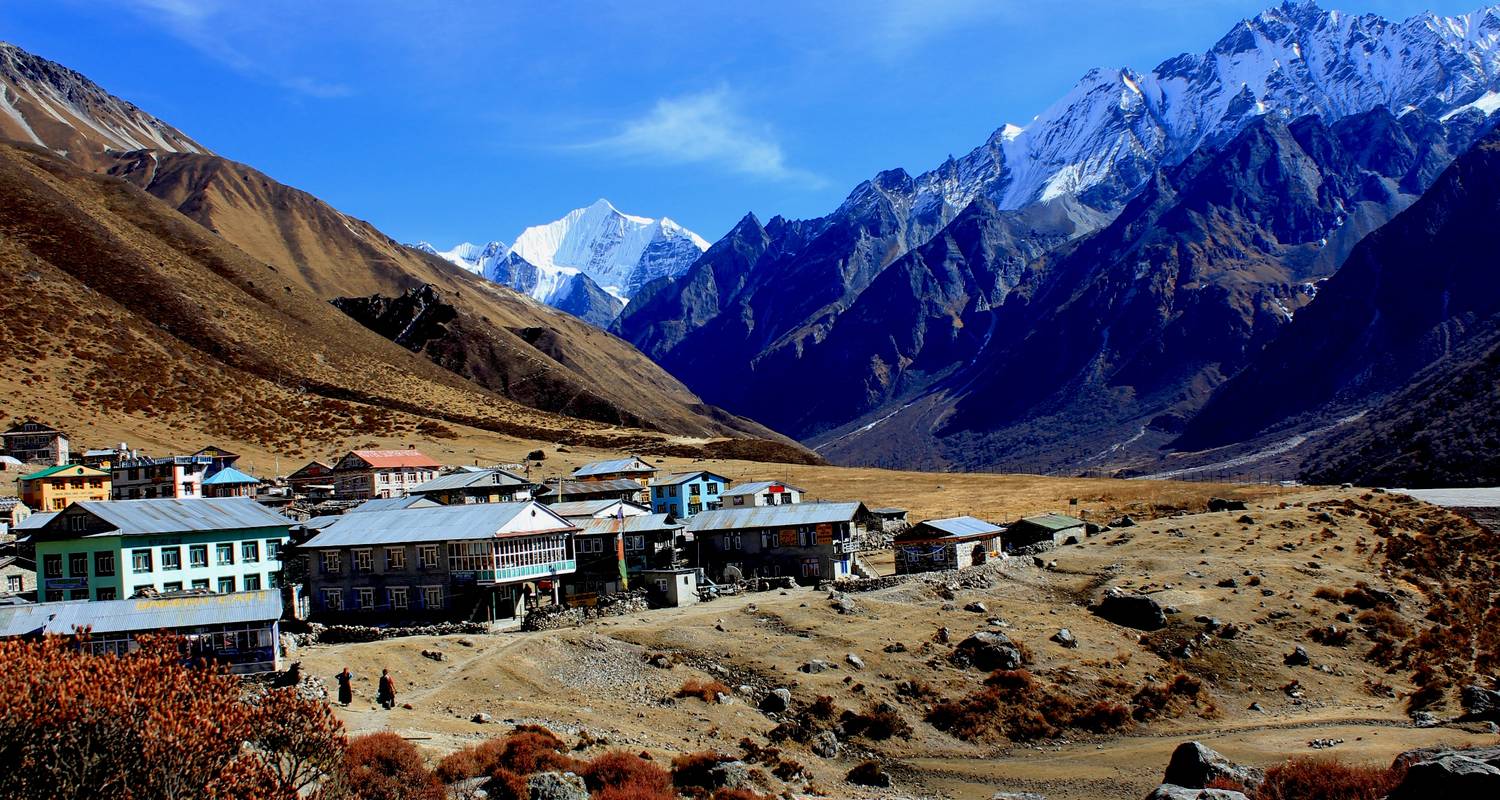
LANGTANG VALLEY TREK 7 DAYS
The Langtang valley, located 61.8 km far from Kathmandu, amazing travelers with its Himalayan streams and magnificent views. Mt. Langtang Lirung (7246 meters) surrounds the colorful rhododendron,...
What is an Alternative Trail in Langtang Valley?
If you're looking for an alternative trail in the Langtang Valley, consider the Gosaikunda Trek. This trail offers a different perspective of the Langtang region and is known for its sacred alpine lakes. The trek typically starts from Dhunche or Syabrubesi and takes you through lush forests, traditional Tamang villages, and high-altitude landscapes. The highlight of the trek is reaching the Gosaikunda Lake, a revered pilgrimage site for both Hindus and Buddhists. The trail is moderately challenging, with some steep ascents, but the stunning views of the Langtang Lirung and other peaks make it worthwhile. The Gosaikunda Trek can be completed in about 7-10 days, making it a great alternative for those with limited time. Additionally, the trail is less crowded than the main Langtang Valley route, offering a more serene trekking experience. Whether you're seeking spiritual solace or simply want to explore a different part of the Langtang region, the Gosaikunda Trek is a fantastic option.
Langtang Valley Trek Cost for November
The cost of trekking to Langtang Valley in November can vary depending on several factors such as the type of accommodation, food preferences, and whether you hire a guide or porter. On average, you can expect to spend around $30 to $50 per day. This includes accommodation, meals, and basic expenses. If you opt for a guided trek, the cost can increase to about $50 to $70 per day, which covers the guide's fee and their expenses. Transportation to and from the trailhead, typically Syabrubesi, will cost around $10 to $20 each way by bus. Additional costs may include trekking permits, travel insurance, and personal expenses. Overall, a 10-day trek in Langtang Valley can cost between $300 to $700, depending on your choices and preferences.
Transportation and Accommodation
Transportation to Langtang Valley usually starts from Kathmandu. The most common way to reach the trailhead at Syabrubesi is by bus, which takes about 7-9 hours and costs around $10 to $20. Private jeeps are also available for hire and can be more comfortable but are more expensive, costing around $150 to $200 for the trip. Accommodation along the Langtang Valley trek is primarily in teahouses, which are basic lodges offering a bed and meals. The cost of a room ranges from $5 to $10 per night, depending on the altitude and season. Some teahouses may charge extra for hot showers and Wi-Fi. It's advisable to book your accommodation in advance during the peak trekking season in November to ensure availability.
Food
Food on the Langtang Valley trek is typically simple but nutritious, designed to provide the energy needed for trekking. Meals are available at teahouses along the trail, with prices ranging from $3 to $7 per meal. Common dishes include dal bhat (rice and lentil soup), noodles, soups, and Tibetan bread. Breakfast options often include porridge, eggs, and pancakes. As you ascend, the cost of food may increase slightly due to the difficulty of transporting supplies to higher altitudes. It's a good idea to budget around $20 to $30 per day for food. Carrying some high-energy snacks like nuts, chocolate, and energy bars can also be helpful for quick boosts of energy during the trek.
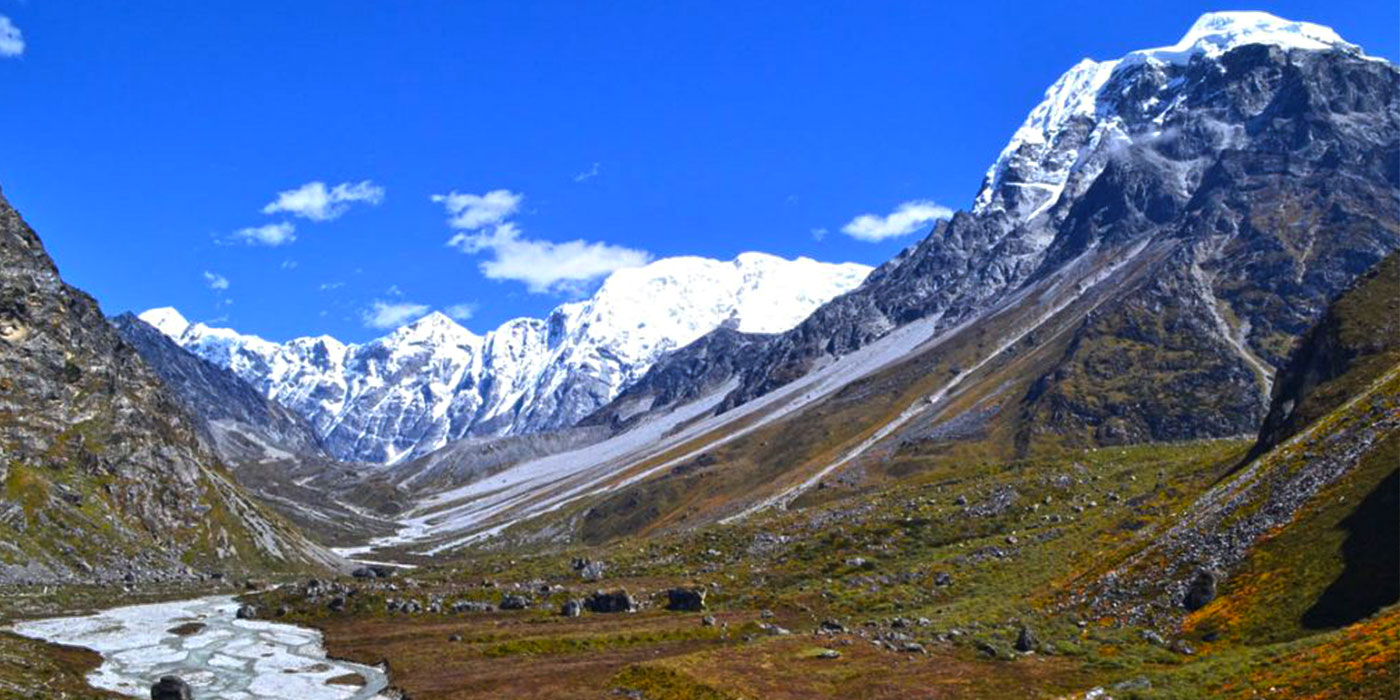
LANGTANG VALLEY TREK 8 DAYS
Langtang National Park is a land of unspoiled beauty, becoming Nepal’s first Himalayan national park in 1976. It is also home to the Tibetan Buddhist Tamang people and is a stone’s throw from Kat...
Permit
To trek in the Langtang Valley, you will need two permits: the Langtang National Park Entry Permit and the TIMS (Trekkers' Information Management System) card. The Langtang National Park Entry Permit costs around $30, while the TIMS card costs about $20. These permits can be obtained in Kathmandu at the Nepal Tourism Board office or through a trekking agency. It's important to carry these permits with you at all times during the trek, as there are several checkpoints where they will be checked. Make sure to have some passport-sized photos and a copy of your passport when applying for these permits.
Conclusion
Trekking to Langtang Valley in November is a fantastic experience, offering stunning landscapes, clear skies, and moderate temperatures. The overall cost of the trek is reasonable, with daily expenses ranging from $30 to $50, depending on your choices for accommodation, food, and whether you hire a guide. Transportation to the trailhead is affordable, and the teahouses along the route provide basic but comfortable lodging. Don't forget to obtain the necessary permits before starting your trek. With proper planning and budgeting, the Langtang Valley trek can be a memorable and rewarding adventure.
Langtang Region Packages
Tamang Heritage and langtang Valley Trek
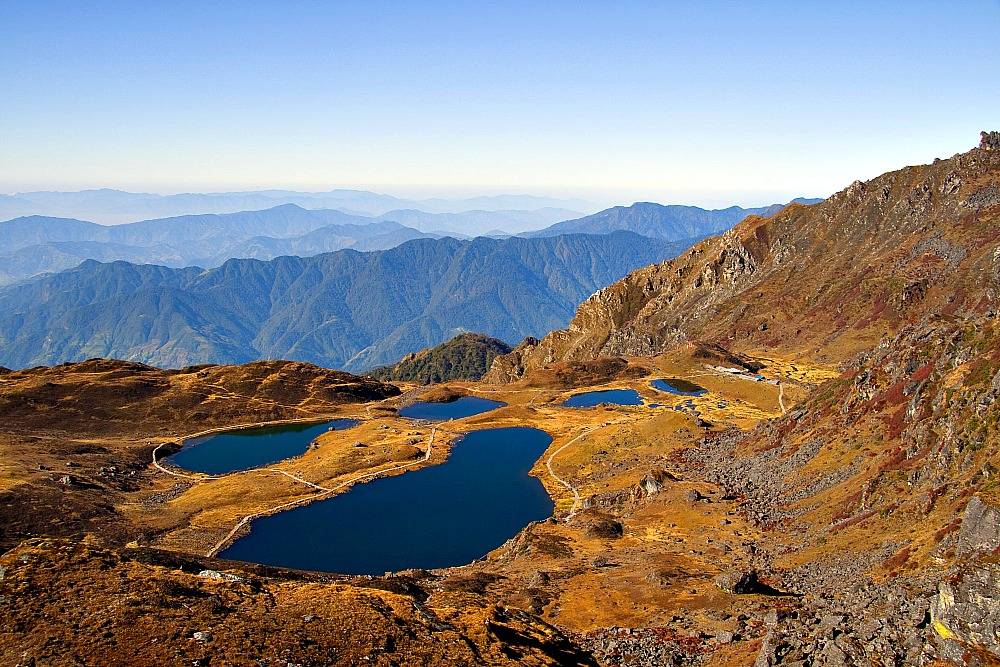
PANCH POKHARI TREK - 14 DAYS
A SENSORY AWAKENING – VISUALLY AND SPIRITUALLY! THIS IS A NEW & EXCITING DESTINATION WITH FANTASTIC MOUNTAIN VIEWS & TREK TO FIVE PRISTINE ALPINE LAKES. FOLLOW IN THE FOOTSTEPS OF LORD SH...
Any Questions? Let Us Know.
Recent Posts
17th June, 2025


















